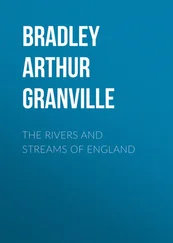Lawrence Burpee - By Canadian Streams
Здесь есть возможность читать онлайн «Lawrence Burpee - By Canadian Streams» — ознакомительный отрывок электронной книги совершенно бесплатно, а после прочтения отрывка купить полную версию. В некоторых случаях можно слушать аудио, скачать через торрент в формате fb2 и присутствует краткое содержание. ISBN: , Жанр: foreign_antique, foreign_prose, Историческая проза, на английском языке. Описание произведения, (предисловие) а так же отзывы посетителей доступны на портале библиотеки ЛибКат.
- Название:By Canadian Streams
- Автор:
- Жанр:
- Год:неизвестен
- ISBN:http://www.gutenberg.org/ebooks/38933
- Рейтинг книги:5 / 5. Голосов: 1
-
Избранное:Добавить в избранное
- Отзывы:
-
Ваша оценка:
- 100
- 1
- 2
- 3
- 4
- 5
By Canadian Streams: краткое содержание, описание и аннотация
Предлагаем к чтению аннотацию, описание, краткое содержание или предисловие (зависит от того, что написал сам автор книги «By Canadian Streams»). Если вы не нашли необходимую информацию о книге — напишите в комментариях, мы постараемся отыскать её.
By Canadian Streams — читать онлайн ознакомительный отрывок
Ниже представлен текст книги, разбитый по страницам. Система сохранения места последней прочитанной страницы, позволяет с удобством читать онлайн бесплатно книгу «By Canadian Streams», без необходимости каждый раз заново искать на чём Вы остановились. Поставьте закладку, и сможете в любой момент перейти на страницу, на которой закончили чтение.
Интервал:
Закладка:
By Canadian Streams
THE RIVERS OF CANADA
Who that has travelled upon their far-spreading waters has not felt the compelling charm of the rivers of Canada? The matchless variety of their scenery, from the gentle grace of the Sissibou to the tempestuous grandeur of the Fraser; the romance that clings to their shores-legends and tales of Micmac and Iroquois, Cree, Blackfoot, and Chilcotin; stories of peaceful Acadian villages beside the Gaspereau, and fortified towns along the St. Lawrence; of warlike expeditions and missionary enterprises up the Richelieu and the Saguenay; of heroic exploits at the Long Sault and at Verchères; of memorable explorations in the north and the far west? How many of us realise the illimitable possibilities of these arteries of a nation, their vital importance as avenues of commerce and communication, the potential energy stored in their rushing waters? Do we even appreciate their actual extent, or thoroughly grasp the fact that this network of waterways covers half a continent, and reaches every corner of this vast Dominion?
Two hundred years ago little was known of these rivers outside the valley of the St. Lawrence. One hundred years later scores of new waterways had been explored from source to outlet, some of them ranking among the great rivers of the earth. The Western Sea, that had lured the restless sons of New France toward the setting sun, that had furnished a dominating impulse to her explorers, from Jacques Cartier to La Vérendrye, was at last reached by Canadians of another race-and the road that they travelled was the water-road that connects three oceans. In their frail canoes these tireless pathfinders journeyed up the mighty St. Lawrence and its great tributary the Ottawa, through Lake Nipissing, and down the French river to Georgian Bay; they skirted the shores of the inland seas to the head of Lake Superior, and by way of numberless portages crossed the almost indistinguishable height of land to Rainy Lake and the beautiful Lake of the Woods. They descended the wild Winnipeg to Lake Winnipeg, paddled up the Saskatchewan to Cumberland House, turned north by way of Frog Portage to the Churchill, and ascended that waterway to its source, where they climbed over Meythe Portage-famous in the annals of exploration and the fur trade-to the Clearwater, a branch of the Athabaska, and so came to Fort Chipewyan, on Lake Athabaska. Descending Slave River for a few miles, they came to the mouth of Peace River, and after many days' weary paddling were in sight of the Rocky Mountains. Still ascending the same river, they traversed the mountains, and by other streams were borne down the western slope to the shores of the remote Pacific.
The world offers no parallel to this extraordinary water-road from the Atlantic to the Pacific; nor is the tale all told. From that great central reservoir, that master-key to the whole system of water communications, the traveller might turn his canoe in any direction, and traverse the length and breadth of the continent to its most remote boundaries: east to the Atlantic, west to the Pacific, north to the Arctic or to Hudson Bay, and south to the Gulf of Mexico.
The story of Canadian rivers would fill several volumes if one attempted to do justice to such a broad and varied theme. One may only hope, in the few pages that follow, to give glimpses of the story; to suggest, however inadequately, the dramatic and romantic possibilities of the subject; to recall a few of the memories that cling to the rivers of Canada.
I
THE GREAT RIVER OF CANADA
He told them of the river whose mighty current gave
Its freshness for a hundred leagues to ocean's briny wave;
He told them of the glorious scene presented to his sight,
What time he reared the cross and crown on Hochelaga's height,
And of the fortress cliff that keeps of Canada the key,
And they welcomed back Jacques Cartier from his perils over sea.
If we abandon ourselves to pure conjecture, we may carry the history of the St. Lawrence back to the beginning of the sixteenth century, when daring Portuguese navigators sailed into these northern latitudes; or to the latter half of the fifteenth century, when the Basque fishermen are said to have brought their adventurous little craft into the Gulf of St. Lawrence; or, if you please, we may push the curtain back to the tenth century and add another variant to the many theories as to the course of the Northmen from Labrador to Nova Scotia. But while this would make a romantic story, it is not history. The Vikings of Northern Europe, and the Portuguese and Basques of Southern Europe, may have sailed the Gulf of St. Lawrence, and may even have entered the estuary of the great river, but there is no evidence that they did, and we must surrender these picturesque myths if we are to build our story upon a tangible foundation.
With the advent of Jacques Cartier, the bluff and fearless mariner of St. Malo, we are upon the solid ground of history. There is nothing vague or uncertain about either the personality or achievements of this Breton captain. He tells his own story, in simple and convincing language. It does not require any peculiar gift of imagination to picture the scene that marks the beginnings of the history of the St. Lawrence. It was upon an autumn day, some three hundred and seventy-four years since. Jacques Cartier, with his little fleet, had searched up and down the coasts of the gulf for the elusive and much-desired passage to the South Seas, but the passage was not there. His Indian guides, Taignoagny and Domagaya, had told him something of the mighty stream-the Great River of Canada-upon whose waters his ships were even now sailing. How almost incredible it must have seemed to him that this vast channel, twenty-five miles across from shore to shore, could be a river, and nothing more! What thoughts must have surged through his brain that here at last was the long-sought passage, the road to golden Cathay! Even when, as he sailed onward, it became certain that this was indeed a river, although a gigantic one, Jacques Cartier still had reason enough to follow its beckoning finger. The Indians said that to explore its upper waters he must take to his boats; but they told him of three several native kingdoms that lay along its banks, and they assured him that its source was so remote that no man had ever journeyed so far. Moreover, it came from the south-west, and there lay, and at no impossible distance, as report had it, the Vermilion Sea. He might well hope to reach that sea by way of the River of Canada. In any event, he determined to try.
A week later the ships were anchored off an island, which Cartier named the Isle of Bacchus, because of the abundance of grapes found upon its shores. Before him rose the forest-clad heights of Cape Diamond, destined to become the key to a Colonial empire, the battling-ground of three great nations, the site of the most picturesque and most romantic city of America. Even at this time the place was of some importance, for here stood the native town of Stadacona, the seat of Donnacona, "Lord of Canada."
While the ships rode at anchor, Donnacona came down the river with twelve canoes and a number of his people. His welcoming harangue astonished Cartier, as much by its inordinate length as by the extraordinary animation with which it was delivered. The explorer wasted no time, however, in ceremonies. The season was drawing on, and much remained to be accomplished. Finding safe quarters for two of his vessels in the St. Charles River he continued his voyage in the third, in spite of the opposition of Donnacona and his people, who with true native jealousy would have prevented his further progress. The ship had to be left behind at the mouth of the Richelieu, but with two boats, manned by some of his sailors, Cartier pushed on to the third native kingdom, Hochelaga, which he reached about the beginning of October. His reception here was embarrassing in its enthusiasm, for the people of Hochelaga testified their faith in the godlike character of their visitor by bringing the sick and the maimed to him to be healed by his touch.
Читать дальшеИнтервал:
Закладка:
Похожие книги на «By Canadian Streams»
Представляем Вашему вниманию похожие книги на «By Canadian Streams» списком для выбора. Мы отобрали схожую по названию и смыслу литературу в надежде предоставить читателям больше вариантов отыскать новые, интересные, ещё непрочитанные произведения.
Обсуждение, отзывы о книге «By Canadian Streams» и просто собственные мнения читателей. Оставьте ваши комментарии, напишите, что Вы думаете о произведении, его смысле или главных героях. Укажите что конкретно понравилось, а что нет, и почему Вы так считаете.












